The Securities Act of 1933 (the “Securities Act“) was passed in that year to remedy certain abuses relating to the sale of securities which manifested during the Great Depression. See 15 U.S.C. §§ 77a et seq. The Securities Act put in place a paradigm for the sale of “securities” that works to protect investors – in particular, it set forth a default rule that a sale of “securities” must be registered, unless an exemption to registration applies. The Securities Act contemplates both “exempt securities” and “exempt transactions” that would be exempted from full registration. The Securities Act also left room for the SEC to create addition exemptions through its rulemaking process. Over time, this has culminated in all of the federal exemptions that we see today (see table below). This post is intended to provide a bird’s eye view of the relevant exemptions, and to isolate which are the top two exemptions for hedge funds.
In the context of an investor subscribing to a hedge fund, it’s not as obvious, but this also constitutes the “sale of securities” because in exchange for the investor’s subscription to the fund, the fund issues to the investor either a limited partnership interest or a limited liability company interest (both of which fall within the definition of “security” under the Securities Act). Thus, this “sale” of securities has to be registered, unless an exemption is available. Knowing if an exemption applies to a sale of securities, and, if so, which exemption is best, and how to go about meeting that exemption, is a complex undertaking – a fund manager is generally best served to simply hire legal counsel to assist them with navigating these complex rules to stay compliant.
The Top Exemptions to Registration
The exemptions to registration are generally found either within the Securities Act, or within the securities regulations, which are located at 17 C.F.R. § 200.1 et seq. If applicable, knowing the best exemption that applies to a given sale involves going through the requirements for each exemption option, and seeing which fits best to the intended sale:
| Exemption | Brief Description of Exemption |
| Section 3(a)(11) |
Section 3(a)(11) provides a narrowly tailored registration exemption for intrastate offerings, mandating that both the issuer and all investors be residents of the same state—and that the securities come to rest exclusively with in-state residents. See 15 U.S.C. § 77c(a)(11).
|
| Rule 147 and Rule 147A |
Rules 147 and 147A provide intrastate offerings exemptions that allow companies to raise capital without full SEC registration, so long as the offering is limited to investors within the issuer’s home state. Under these rules, the company must be organized and conducting business in the state, and all offers and sales of securities must be made only to residents of that state. While Rule 147 has traditionally governed these offerings, Rule 147A, introduced to modernize and ease some of the older restrictions, offers a similar exemption with more flexible requirements, still ensuring a strong local connection. See 17 C.F.R. § 230.147, 230.147A.
|
| Section 4(a)(2) |
Section 4(a)(2) provides an exemption from the registration requirements for transactions by an issuer that do not involve a public offering. See 15 U.S.C. § 77d(a)(2).
|
| Rule 504 |
Rule 504 of Regulation D provides a registration exemption that allows eligible companies, typically smaller businesses, to offer and sell up to $10 million of securities in a 12-month period without filing a full registration statement with the SEC. Unlike some other exemptions that restrict participation, Rule 504 does not mandate that all investors be accredited, though issuers must still comply with state securities laws and any specific investor qualification requirements imposed by those laws. See 17 C.F.R. § 230.504(b)(1).
|
| Rule 506(b) |
Rule 506(b) under Regulation D allows issuers to raise an unlimited amount of capital without registering the securities, so long as they sell only to accredited investors and up to 35 non-accredited but sophisticated investors without using general solicitation or advertising. Issuers must also comply with disclosure requirements (especially for any non-accredited investors) and follow other applicable conditions to maintain the exemption. See 17 C.F.R. § 230.506(b).
|
| Rule 506(c) |
The 506(c) Exemption under Regulation D allows issuers to engage in general solicitation and advertising as long as all purchasers are accredited investors, and the issuer takes reasonable steps to verify their accredited status while also ensuring that no “bad actor” disqualifications apply to the offering. Similar to 506(b), there’s no limit on how much can be raised, but the verification requirement, along with the bad actor screening, adds an extra compliance layer to ensure that only eligible investors participate. See 17 C.F.R. § 230.506(c)
|
| Regulation A+ (Tier 1) |
Regulation A+ under the Securities Act allows eligible companies to raise up to $20 million (Tier 1) annually from both accredited and non-accredited investors, with lighter disclosure and ongoing reporting requirements compared to a full IPO. It also permits issuers to “test the waters” to gauge investor interest before filing, though they must still comply with specific qualification and offering conditions. See 17 C.F.R. § 230.251(a)(1).
|
| Regulation A+ (Tier 2) |
Regulation A+ under the Securities Act allows eligible companies to raise up to $75 million (Tier 2) annually from both accredited and non-accredited investors, with lighter disclosure and ongoing reporting requirements compared to a full IPO. It also permits issuers to “test the waters” to gauge investor interest before filing, though they must still comply with specific qualification and offering conditions. See 17 C.F.R. § 230.251(a)(2).
|
| Regulation CF |
Regulation Crowdfunding (Reg CF) allows eligible companies to raise up to $5 million within a 12-month period from both accredited and non-accredited investors through SEC-registered crowdfunding portals. It imposes specific disclosure requirements, investment limits, and ongoing compliance obligations to protect investors. See 17 C.F.R. § 227.100 et seq.
|
| Regulation S |
Regulation S provides an exemption from SEC registration for securities offerings conducted exclusively outside the United States. It requires that the securities be sold to “non-U.S. persons” with no directed selling efforts in the U.S. See 17 C.F.R. § 230.901 et seq.
|
Note: Although the above represent the most popular exemptions, it is a non-exhaustive list. Other lesser-used exemptions include, but are not limited to: the other “exempt securities” listed at Sections 3(a) of the Securities Act, Rule 701 relating to Employee Benefit Plans, various exemptions related to the resale of securities, and more.
The effect of this registration / exemption paradigm is to carve out a subset of the U.S. population which may not participate in certain sales of securities, for their own protection. More sophisticated investors, on the other hand, are given more leeway to participate, given they generally have the additional sophistication and resources to understand, and bear the risk of, a sale of securities without full registration.
For Hedge Funds, Usually the Exemptions Under Rule 506(b) and 506(c) Work Best
Of all the exemptions set forth in the table above, the exemptions under Regulation D of the Securities Act, in particular the exemptions under Rule 506(b) and 506(c) of Regulation D, are often the best options for hedge funds. This is so because they do not work to limit the fund’s potential expansion. In order to meet the exemption, whether 506(b) or 506(c), all of the relevant requirements for the exemption within Regulation D must be followed. See 17 C.F.R. § 230.506 et seq. Regulation D also states that any issuer relying on the exemption “must file with the [SEC] a notice of sales containing the information required by Form D for each new offering of securities within 15 calendar days after the first sale of securities in the offering…” See 17 C.F.R. § 230.503(a)(1).
Note: This process has to be started promptly, because it takes a few days to get the Form ID filled out, notarized, and submitted to the SEC, to get a CIK number back, to then be able to file the Form D to the Edgar Database. Once the Form D filing is made, there is a continuing requirement that an annual updating amendment be filed with the SEC on or before the 1-year anniversary of the sale, if the sale remains ongoing. See 17 C.F.R. 230.503(a)(3)(iii). For hedge funds, which are open-ended, this means that the fund will have to file an amended Form D on an annual basis on or before the 1-year anniversary of the date of the Form D’s initial filing. The SEC has recently shown that it will enforce non-compliance related to the filing of Form D. See e.g., SEC Files Settled Charges Against Multiple Entities for Failure to Timely File Forms D in Connection with Securities Offerings, Press Release No. 2024-210 (Dec. 20, 2024), available at https://www.sec.gov/news/press-release/2024-210.
State-Level Registration / Exemption Paradigm
The above has focused on the registration / exemption paradigm at the federal level, however an entirely separate registration / exemption paradigm for the sale of securities exists at the level of each state. As shown above, some of the exemptions expressly preempt state laws, whereas others do not. Although the states are required under the Securities Act to recognize the federal exemptions that have the federal preemptive effect, they are still given some leeway to impose additional requirements, including the requirement that the Form D be “notice filed” with their state regulator. See 15 U.S.C. 77r(c)(2)(A). Thus, even if the Rule 506(b) or (c) federal exemptions are selected, a separate review must be conducted at the level of each state, to determine if any further action needs to be taken:
- Florida: in Florida, for instance, the sale of securities under the 506(b) and (c) federal exemptions fall within the definition of “federally covered securities” and are thus recognized to be within the exclusive jurisdiction of the SEC. Florida does not impose a separate requirement that the sale of such federally covered securities be “notice filed” with the Florida Office of Financial Regulation (“OFR”). See generally Chapter 517, Florida Statutes (2024). Note: Florida’s OFR, on its website, also raises the issue of sales under Reg D also being subject to Chapter 517’s dealer registration requirements…although the issue of dealer registration could arise in certain contexts related to Reg D, this generally does not arise in the context of subscriptions to hedge funds, as it would fall within the exemption for “issuers,” or certain agents of the same. See Fla. Stat. § 517.021(10)(b)(6)-(7).
Conclusion:
In conclusion, the federal exemptions under Rules 506(b) and 506(c) work best for hedge funds, though there are complex and ongoing requirements that have to be met. Although these two exemptions have federal preemptive effect, there are usually also requirements that have to be met at the level of each state. A fund is well-served to hire counsel to manage this compliance obligation for the fund.
Disclaimer:
The information provided on this blog post is for general informational purposes only and does not constitute legal advice. No attorney-client relationship is formed by viewing this content, commenting on posts, or contacting the blog’s author. You should not act or refrain from acting based on any information contained herein without seeking professional counsel. Laws and regulations vary by jurisdiction, and circumstances can differ, so you should consult a qualified attorney regarding your individual situation. The author disclaims all liability for actions taken or not taken based on the contents of this blog.





